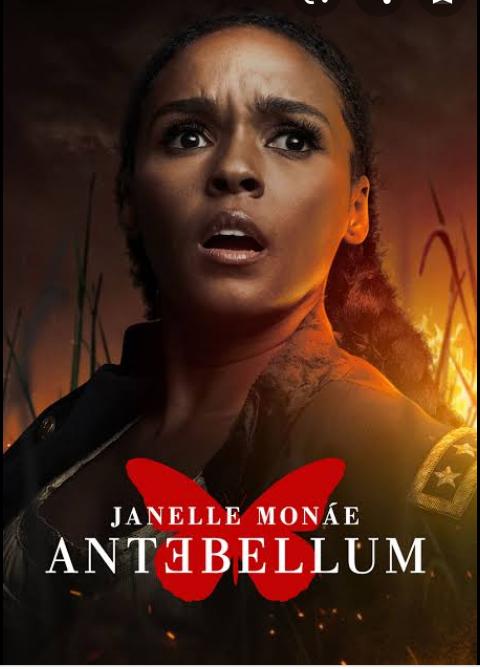Global Issues
Antebellum & The Sociology Of Black Disenfranchisement -By Hassan Idris

FILMING LOCATION:NEW ORLEANS
LOUISIANA, USA.
DATE RELEASE: 18 SEPTEMBER,2020(USA).
The refinement of a movie is the ability to carry along its audience, pass a satisfactory message and even feed the audience with messages that go along with what the movie claimed to portray. Antebellum is a movie I enjoyed from one perspective and also do not enjoy from another perspective. Though, I enjoy the Sociological exhibition and discuss the disenfranchisement of Black Americans, lack of inclusion of the blacks in the affairs of the Americans, race and even gender which are sociological concepts and concern. Black people especially black women in particular have been perceived as a threat to the patriarchal nature of Americans. I won’t debunk the fact that I love the role paid by Veronica Henly, PHD, Sociologist and best selling author of ‘Shedding the coping persona. The metamorphosis of a revolution.
However, the movie Antebellum suffers from what I have mentioned at the beginning of this review. The trailers make the movie looks as though the story encompasses metaphysical forces or science fiction components that induce the central character to be clasped in a dreadful reality. Again, the fugitives overseeing the marketing are to indict, selling an entirely different movie than what Antebellum delivers, so audiences going in anticipating a genre movie are likely going to count as well as the peoples did who were deluded by serenity’s previews.
As depicted in the camper, Janelle Monáe plays two roles in the movie, the first of which is Eden, a slave brought to a plantation run by confederate soldiers. Monáe also dabbles with Veronica Henley, a triumphant modern-day author and sociologist who continually finds herself in disputes and debate about race and the role of today’s black women in society. Monáe is enormous in both these roles, dedicating to the story while giving a very robust performance throughout the movie.
She is besieged by a tremendous cast. Eric Lange as startling as a confederate general while Tongayai Christa dabbles Eli, a slave eager to circumvent but who is willing to put himself in harm’s way for others. Jena Malone is the bizarre Elizabeth who devotes to the material as much as Monáe despite having a big spectacle that’s relatively cartoonish. Kiersey Clemons makes the most of her abrupt time on screen as Julia, and it is remorseful that her role is so minor in this movie. Though, one of the promising parts of the movie is Gabourey Sidibe playing Dawn, one of Veronica’s friends. She pulls energy to Antebellum that heightens the middling writing, making spectators crave more of her than what the movie delivers.
Well, assisting to enhance this picture immeasurably is Director of Photography Pedro Luque Briozzo. His scaffolding of shots and capturing of light during the mysterious hour is much on point. He also supports in introducing the world of the plantation at the onset with a tracking shot that fascinates onlookers in the atmosphere in just a couple of minutes. For all of its shortcomings, Antebellum is an incredibly good-looking movie.
The central flaw with this movie prevaricates in its script. Writers/directors Gerard Bush and Christopher Renz make some junctures that are apparent (e. g., forced enslavement is bad) and don’t appear to have extended to confess other than ‘isn’t this tragic? ’ As a fallout, the duration spent on the plantation as the soldiers outrage their hostages feels extremely exploitative with no information or knowledge that spectators wouldn’t be aware of or have already.
The moviemakers blend the dilemma by bringing into the world characters act in directions and say things that are awfully on the nose. Sarah (Lily Cowles), who is one of Veronica’s friends, during the matter of an informal conversation says, ‘The unsettled past can certainly wreak havoc on the present. ’ Just in case dialogue like that doesn’t drive home the point about the far-reaching consequences of slavery and its relations to racist behaviours of today, Bush and Renz fling in a scene of the confederate soldiers trudging with torches shouting in unison ‘blood and soil. ’
While the surface-level writing whacks spectators over the head with the movie’s themes, it also makes Veronica appear considerably less rational than she should be. The moviemakers make it a juncture to emphasize that the heroine is a PhD, yet she speaks in banalities and sounds about as insightful as the movie when talking about racial politics.
However, one of the biggest offences that Bush and Renz perpetrate involves the dialogue they give Veronica for a sermon she delivers. She cautions her audience against being stereotyped, saying, ‘God forbid, we continue to get branded as “the angry black woman. ”’ In a significant minute late in the movie, that portrayal is exactly what the movie makers serve up, and they do so with a symbolic slow motion shot, no less, making it arduous to take incredibly or watch.
In conclusion, the beginning of the movie Antebellum is obstructing because everyone involved in the endeavour seems to have moved toward it with such passion. The art on display infers this motion picture could have been so much better than it had the writing been stronger. As it sits, this movie just makes audiences worried for a good treaty of its driving time while assuming that it is far more clever and genuine than it is.
HASSAN IDRIS
idrishassan035@gmail.com









